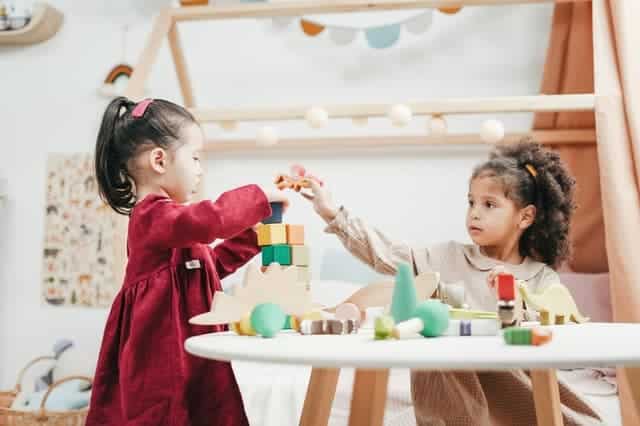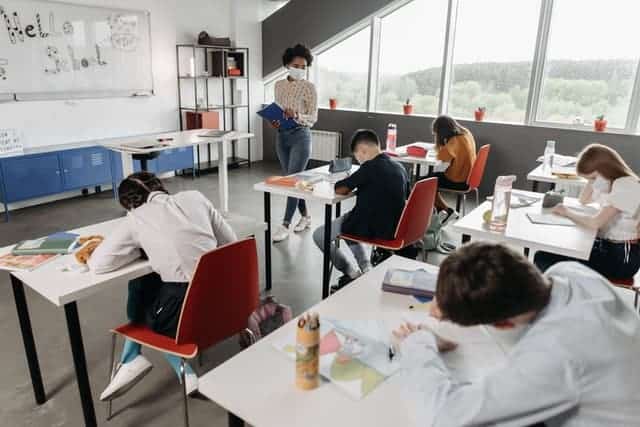Reading social cues is an essential part of being a caring member of society at every age. Sometimes, people learn these cues naturally. In other cases, they must be taught.
Children who struggle with social skills sometimes have trouble picking up on social cues, which can lead them to misunderstand people or situations. For this reason, it’s important to teach children how to read social cues.
Reading social cues can be taught through a series of activities. This article will discuss social cue examples and teaching social cues.
Reading Social Cues
Social Cue Examples
There are four categories of social cues–facial expressions, body language, vocal pitch and tone, and personal space (also referred to as physical boundaries).
Facial Expressions
According to the US National Library of Medicine, “The expressions we see in the faces of others engage a number of different cognitive processes.” For this reason, assigning one’s facial expression to their emotional state and intention helps us make educated choices about how we interact with others.
For example, if a child sees that a classmate is frowning and, as a result, intuits that child is sad, they will take their sadness as a cue, telling them how to interact with their classmate. An empathetic child may ask their friend what’s wrong. A child who enjoys making people laugh may try to cheer their friend up.
Understanding what someone else is feeling helps us know how to best interact with them. If a child doesn’t have this ability, they may act in a way that is perceived as lacking boundaries or being uncaring, when that isn’t the case at all.
Just like facial expressions, body language is an example of a social cue.
Body Language

Body language is the science of nonverbal signals such as gestures, facial expressions, and eye gaze that communicate emotions and intentions (Science of People). People use their bodies to communicate all the time. Sometimes we purposely use our body language demonstratively. Other times our body language reveals our internal intentions without our awareness.
When children are good at reading social cues, it gives them confidence socially. When they have difficulty understanding body language, they may feel they are experiencing rejection or encounter confusing situations without knowing how to communicate the experience.
For example, if a group of three classmates is huddled together and speaking in whispered tones with their faces creating a small circle, the cue is clearly that this group needs privacy. If a child steps into the circle and asks, “Do you want to play?” they will likely be rebuffed. In this example, the child did not do anything wrong but may receive a response that makes them feel uncomfortable.
Reading body language is important to social interactions and social-emotional development. Another of these critical social cues is vocal pitch.
Vocal Pitch and Tone
Vocal pitch and tone fall under the category of nonverbal communication. Such communication has been studied extensively in the context of impression formation because people’s opinion about another person is not only based on what a person says (verbal cues) but also to a large extent on visual and vocal cues (Sporer & Schwandt). When children miss social cues reflected in another person’s voice, they may fail to understand the relationship between themselves and another person.
Furthermore, changes in vocal tone can change the meaning behind what someone says. For example, if a teacher asks a student if they completed their homework, a student might say, “Yes, I completed my homework?” in a high-pitched voice and with an upward inflection at the end of the sentence. This vocal cue might alert the teacher that the student did not finish their homework.
When a child misses social cues in terms of vocal pitch, they may take words too literally and end up missing jokes or another child’s intentions.
Vocal pitch is a social cue example, as is personal space.
Personal Space (Or Physical Boundaries)
In general, we tend to move close to those we are interested in knowing further or with whom we are comfortable, and we move away from those with whom we haven’t reached a high level of comfort. When a child misses a personal space social cue, they may stand too close to someone they are just meeting, or they may choose to stand at a great distance, thus sending a confusing signal to a friend.
Identifying personal space is important for children for various reasons–including safety, healthy social interactions, building accurate impressions of others, and feeling a general belonging within their communities.
Teaching Social Cues

There are several activities teachers and parents can use to teach social cues to the children in their lives. The following three activities were tested over time, and when they’re practiced often, can vastly improve a child’s ability to read social cues.
Reading Social Cues Activities
1. Monkey See, Monkey Do
This activity allows students to practice eye contact and recognize facial expressions. The objective is for students to mirror another person’s facial expressions. For example, you can furrow your brow and frown and have your students imitate you.
Other ideas for expressions or actions include smiling and puckering your lips or winking. Once students have successfully imitated your facial expression, you can ask them how they think you feel when making that face.
2. Emotion Charades
This activity teaches students how to interpret emotions. First, write down what you feel on small pieces of paper. Examples could include happy, angry, frustrated, confused, or sad. Fold the pieces of paper in half and place them in a hat.
Divide the class into two teams. A student from the first team picks a piece of paper from the hat and acts out the word written on the paper. Their teammates have one minute to guess the emotion. If they do, they get one point. The game continues, and a student from the other team picks a word and acts it out. When there are no words left, the game is over. (Study.com)
3. One Word Story
This activity helps students learn to stay on topic during conversations and understand others’ facial expressions during conversations.
Have your students sit in a circle and tell a story one word at a time. For example, the first student might say, “The,” then the second student could say, “boy,” the third could say, “played,” etc. The game’s objective is for the group to tell one cohesive story.
If you are looking for creative and innovative ways to teach children to read social cues, we invite you to reach out to our team!
In addition to working with students, Soul Shoppe supports the entire school community through the creation and facilitation of dynamic programs that give teachers and parents the necessary tools to foster social-emotional learning. Find out more about Soul Shoppe’s social-emotional learning programs, peacemakers certification, and more by contacting us.


